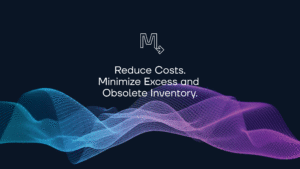Take The Narrow Path To Wide Adoption — Here’s Why And How
Medical Device Companies spend millions of dollars and multiple years to develop, test, and approve new software tools. Even when such technology features incredible functionality, it often fails to realize it’s full potential. Much of the investment is wasted because true adoption is never achieved.
This is what usually happens:
Bad User Experience + Flawed Rollout Strategy = Wasted $$$ (Failure to Optimize)
Either factor alone will impede your efforts, but the combination is a recipe for failure.
While poor user experience is often the main obstruction, another major factor is a flawed implementation strategy. Company leaders in pursuit of the best ROI may be tempted to employ broad (& fast) implementation strategies right away. But quick-and-dirty or “big bang” approaches don’t provide opportunities to adapt, change, or fix any of the initial barriers to adoption. An immediate, broad rollout will likely prevent you from creating the best user experience.
This strategy not only hurts your implementation short-term, but it also creates a self-perpetuating myth among the users when they believe “the tool doesn’t work and will never work, so there is no point in using it”. Not only does a broad strategy create an overwhelming task for the company, risking implementation failure; but it also limits ROI, and keeps the entire project from achieving full potential.
Consider this fact: Medical technologies on average take 10-15 years to be broadly adopted, and in light of the rapid speed at which technology advances, your company’s investment will be out-dated or failing before it even gets a chance to have its day in the sun. This is why ROI suffers greatly with broad implementation.
Full Adoption Can Be Achieved
Ok, then what is the best path to full adoption?
It may not be what you first think.
“Slow is smooth, and smooth is fast.”
This seemingly contradictory idiom makes perfect sense when regarding how our brain learns. Whatever task we are trying to achieve, the action we take must be focused, deliberate and accurate: functional performance cannot be sacrificed for speed when it comes to gaining user trust.
The Best Way To Get Users To Adopt Is To Focus On The User First
Find out what the users want, so you can give them what they need.
Research and spend time in the field with the actual users. Not just one day, but extensive time with the users is the only way to truly understand them.
Once you get to know them better, then you can segment them and communicate the right messages.
Segmenting the specific users and territories, providing sales and operational leaders with guidance on whom the technology suits best, and clearly stating expected outcomes helps to drive use, preference, and — eventually — increased adoption rates.
It also helps you align your resources and investments realistically to foster adoption.
Rules of Engagement: Adoption & Penetration
Sales Reps are committed to the success of the business, which means they will utilize the most effective means possible to best serve their customers.
Reps take no personal stake in assuring the success or failure of a particular technology tool – regardless of how much has been invested in it, or who else in the company benefits by reps using it.
We know that no tool can succeed unless the reps actually use it; so how can you convince reps to adopt a new tool, in place of doing whatever has been working for them?
Users (Sales Reps especially) need to believe the technology will deliver on three key points:
- Improved Service & Confidence (Surgeon Relationships)
- Improved Trust & Efficiency (Ops Partnership)
- Reduction of Unnecessary Busywork (Emails, Admin, Phone Calls, Manual Data Entry, Multiple Physical Location Inspections)
But even when the technology exceeds expectations, rarely will everyone hop on board at the same time.
Populations naturally segment themselves into adoption groups based on their intrinsic beliefs regarding the status quo versus the risk of change.
It’s left to us as leaders and decision-makers to identify and leverage those segmented groups to maximize adoption.
Risks of Starting Too Fast & Not Segmenting
Rushing a rollout without intelligent, deliberate planning definitely will negatively impact user adoption. This is apparent as you consider just a few known risks of starting too fast:
– Miscommunication / False Expectations
– Slow To Adapt & Change Software To Meet User Needs
– Bad User Experience (permanent negative connections)
– Irrelevant Results (not actionable)
– Permanent Low Adoption
When The Users Love the System, You Will Know
When a majority of the users adopt, you are on the right track. Geoffrey Moore’s research and theories in Crossing The Chasm is just as relevant today as it ever was. He teaches that the key to getting high user adoption is to focus on the right people first.
The Early Adopters are innovators, eager to invest in technology that will improve their lives. Willing to forge their own path, they require little guidance, nor evidence of demonstrated benefits
However, only about 15 percent of technologies make it beyond the Early Adopters to be accepted by the Early Majority. The Early Majority look for hard numbers and proven evidence of success.
The Late Majority (laggards) require the same evidence as the Early Majority, but additionally, they need to observe the successful experiences of peer users in order to give them confidence in the new technology.
So we see that each successive group of adopters expects increasing levels of evidence and validation of the new technology’s value proposition, with progressively more involved onboarding and training.
Give Them A Better (and often slower starting) User Experience
Make sure you are training the right people, and train them well.
Communication here is the most important factor. During a pilot and initial go-live, you cannot over-communicate. Let everyone know what they are receiving, why they are getting it, and what they are supposed to do with it. Set the expectations correctly, and then overdeliver.
In the absence of pre-existing champions or best-use case scenarios (i.e. Teams, Distributors, Reps that already believe they will most quickly experience the benefits of the technology), most users will only adopt the tool as a last resort.
So, find the users that will see the biggest benefit soonest, and give them the most basic functionality first. Then once they see the initial value, give them more and show them more.
While this does not provide every user with every function right away, it provides a great experience that can be scaled to every user, within all adoption segments.
When evidence-based target segment guidance is developed and provided from the beginning, this will inform executive leaders on who to pilot and roll-out to next. As the success stories come and the adoption barriers are broken, those learnings and stories can be used to promote adoption among future users.
The clearer the benefit and better the results, the faster the adoption. So go slow (smooth) at first, to go fast later.
Patient Segmentation Considerations & Factors
Once you can determine the true potential of your desired technology you can anticipate and create strategies to overcome any real barriers to adoption.
Strategically segmenting your Early Adopters allows you to determine which distributors or territories will see the most impactful benefit and have the greatest potential for adoption. Rolling out with a strategic approach allows you to better manage expectations across all stakeholders.
Factors that can be used to objectively prioritize distributors with the greatest success potential may include:
- Current state: urgency and potential benefit associated with change vs current state such as:
- the sales-ops relationship (trust levels, ease of communication, etc.)
- turn ratios, expiring inventory
- inventory lost in the field
- User Profile – “Demographics” of territory or distributor, factors that indicate success potential such as:
- whether loaners or consigned inventory are utilized
- how much manual entry is required currently
- Customer Service to Rep ratio
- market type/location
- team size
- Technology response rate – current tools or processes indicating the ability to incorporate new tech, such as:
- Multiple ERP systems
- Existing Field/Operations system contracts
- IT department is managing a significant portion of tools
- Economic – how much are they able to invest right now? Factors include:
- Recent investments/current contracts
- Sales Performance
Consider the actionability of each distributor/territory, to identify the “perfect user”, for whom the technology will provide the greatest benefit.
A targeted and focused rollout approach will actually result in broad adoption requiring the lowest investment and the greatest return, in the shortest time. It makes sense to measure twice and cut once. Unlike a broad roll-out–which will always result in a bunch of wrong cuts–with a focused, targeted roll-out, you are constantly measuring until you gain complete user adoption.
The key is to focus on the process as much as the outcome. Only then are you likely to see the benefits that come with wide user adoption.
Your Journey
Movemedical has helped many medical device manufacturers succeed whose previous “solution” failed them, whether it was built in-house or by a 3rd party.
You need to partner with someone who has done it before. We can help.
If you want guidance in applying the 7 Step Process so you can achieve greater operational effectiveness and inventory performance, we are here to help.
Better partners help drive better results. We can help, we can be your partner.
Call Now: 877.469.3992
Email: mm@movemedical.com
Request Info: https://movemedical.com/request
Watch Automated Demo: http://www.movemedical.com/watchdemo
Watch This: www.movemedical.com/transform
Key benefits: consignment management at all levels, true item level kitting, case management and inventory assignment, loaners, accurate forecasting, complete visibility, par-management, RFID, tracking all items inside and outside kits, sterile, non-sterile, HIPAA compliant communication (files, messaging), and full custom ERP integrations to reduce manual effort.
Now it is time to take action.
Call Movemedical now to begin your journey.
858.956.0219 or info@movemedical.com
A good field inventory solution and/or a WMS are worth their weight in gold—but a fully integrated medical device-specific operations and sales force effectiveness platform is priceless.
A complete tool should be able to or have:
- Surgery Scheduling (+ Calendar)
- Surgeon Preferences / Preference Cards
- Loaner/Inventory Requests
- Hybrid Kitting (Skinny Kits, Kit Management, Kit Versioning, Tracking)
- Case Management
- Sourcing Matrix Tool
- Directed Picking & Put-away (Bin Mapped)
- Active Order Visibility
- Shipping Coordination (FedEx, UPS Integration)
- Customer/Account Management
- Opportunity/Lead Management
- Inventory Control & Visibility (All Locations, All Buckets)
- Auto Product Replenishment
- Commission Calculations
- Expiration Notifications
- Direct Orders
- Send & Receive Tools (Rep to Rep etc.)
- Contract & List Pricing (Real-time)
- Audit/Cycle Counts
- Reporting & Billing
- Image & File Sharing
- Secure HIPAA Compliant Communication
- Mobile Usage Capture
- UDI Compliance
- Barcode Scanning
- RFID Integration & RFID Reconciling (HF/UHF)
- ERP/CRM/EMR Integrations (SAP, ORACLE, Etc)
- Demand Planning Tools
- Consignment/Loaner Management
- Pluggable Workflows (Programmatic Integrations, Integrated Prediction Models)
- HIPAA Compliant Communication Platform (Messages, Calendar, Usage, Notes, Files)
- Sourcing Optimization
- Future Stock (Virtual Inventory Assigned to Future Events)
- Atomic Inventory (UDI Ready, Piece Level Tracking, Serialized or Not)
- Cross Boundary Workflows
- Lost & Found (Automatic Cycle Counting )
- Merger/Acquisition Integration
- Par Management
- Multi-Catalog Management
- Loan Optimization (1 Loan Per Day)
- Separate or Combined Sales & Operations Alignment
- Cost-to-Serve Metrics
- Turn Ratio Dashboards
- Sales Metrics / Data (Reps, Leaders, Corporate)
Need to talk with someone? We understand. Call anytime.
phone: 858.956.0208
email: mm@movemedical.com
or visit: www.movemedical.com/product



